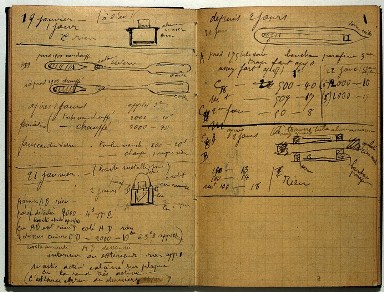How her pioneering research on radioactivity is changing women's lives today
This post was originally written for International Women's Day. To write it, we ran a poll on our Facebook page asking our followers to vote for who they thought were the most influential and inspirational women of history.
The poll options became a substantial list of great women including Jane Austen, Rosa Parks, Amelia Earhart, Mother Teresa and Joan of Arc. There was a very clear winner with 45% of the vote: Marie Skłodowska Curie.
Putting the Facebook poll together, to me, it was a list of interesting, historical people. Marie Curie was a name on a list of names. But since then, it's got personal.
This week, a close family member was diagnosed with breast cancer. Whilst this is clearly not good news, the prognosis is excellent due to early diagnosis and the decades of research that has now gone into treating the disease. This has made me think about the effect that one woman born around 150 years ago continues to have on the lives of women everywhere today.
Who was Marie Curie?
Marie Skłodowska was born in 1867 in Warsaw, Poland. She was the youngest of five children. Her parents, Bronisława and Władysław, were both teachers. Her father lectured in maths and physics – both subjects Marie went on to pursue herself.
She applied for a place at Krakow University but was rejected because she was female. It's said that Marie then attended lectures in Krakow dressed as a man until she was discovered.
Marie and her sister Bronisława became involved with an organisation called the Flying University - a clandestine educational establishment teaching a pro-Polish curriculum in defiance of the Russian authorities, that was willing to admit female students.
How equal is education around the world?
United Nations statistics showed that there are equal numbers of men and women studying in 'primary' and 'secondary' education and that in'tertiary' education (also called 'further', 'higher' or 'continuing' education) worldwide, there are more girls than boys.
So that's it, education is equal the world over, right? Wrong. That's an average, and the figures vary widely from country to country, for example, only 4% of women in Guinea enrol in a tertiary education, compared to 39% women in Indonesia.
In Europe, the figures are more balanced as these examples show - 49% of women above the age of 25 have achieved a tertiary education in the UK, 33% in France, 31.5% in Poland and 39% in Sweden.
However, the gender bias of subject matter is still strong.
In tertiary education, although enrolment is increasing faster for women than men, there are disparities in the fields of study, with women underrpresented in science, technology, engineering and maths. Women make up only around a third of graduates in maths, science and technology.
Imagine Marie's situation 130 years ago - not only did she pursue the unfeminine ambition of education, she was studying topics that were, and still are, traditionally under the remit of men.
Where did Marie Curie study?
Marie moved to Paris, France, in 1891, to join her sister, and to study at the University of Paris (La Sorbonne).
She earned two degrees - one in mathematics and one in physics, studying by day, and tutoring by night to earn money. Later, she became the University's first female professor.
In 1895, she married Pierre Curie, a tutor at the School of Physics and Chemistry in Paris.
She changed her name to Marie Skłodowska-Curie, maintaining the Polish part of her name and incorporating her husband's. Why then, I wonder, do we now know her only as Marie Curie? Whose decision was it to lose her maiden name? Was it because Marie Curie has a nice symmetry to it, or that there's a semantic and even poetic link between the name Curie and the word 'cure'? Or was it the effect of patriarchal tradition or cultural or political pressures?
What were Marie Curie's scientific discoveries?
In 1896, Marie took up a scientific puzzle that had stumped her colleague, Henri Becquerel, and cracked it herself.
In doing so, she discovered and named radioactivity, and worked out its relation to uranium. Years later, she wrote a biography of her husband and was careful to point out that these discoveries were hers and not Pierre's.
Following on from these discoveries, Marie went on to develop techniques for isolating radioactive isotopes, and discovered two new elements, polonium and radium. Under her direction, the world's first studies were conducted into the treatment of neoplasms (masses of tissue that can develop into cancer), using radioactive isotopes.
Marie's research and discoveries led to the radiotherapy treatment available to cancer patients today.
She was the first woman to be awarded a Nobel Prize and the first person ever to receive two of them - the Nobel Prize for Physics in 1903 and the Nobel Prize for Chemistry in 1911.
What is Marie Curie's legacy?
For most cancer types, radiotherapy (or radiation therapy) is used 75% of the time with the intention of curing, rather than halting development of cancers.
It is the most cost-effective treatment for cancer and is involved in 40% of all cases in which cancer patients are cured.
World Health Organization figures show that over 18 million new cancer cases are diagnosed every year.
So with every year that goes by, Marie's discoveries take on even greater significance.
This blog post was updated on 10 January 2024

